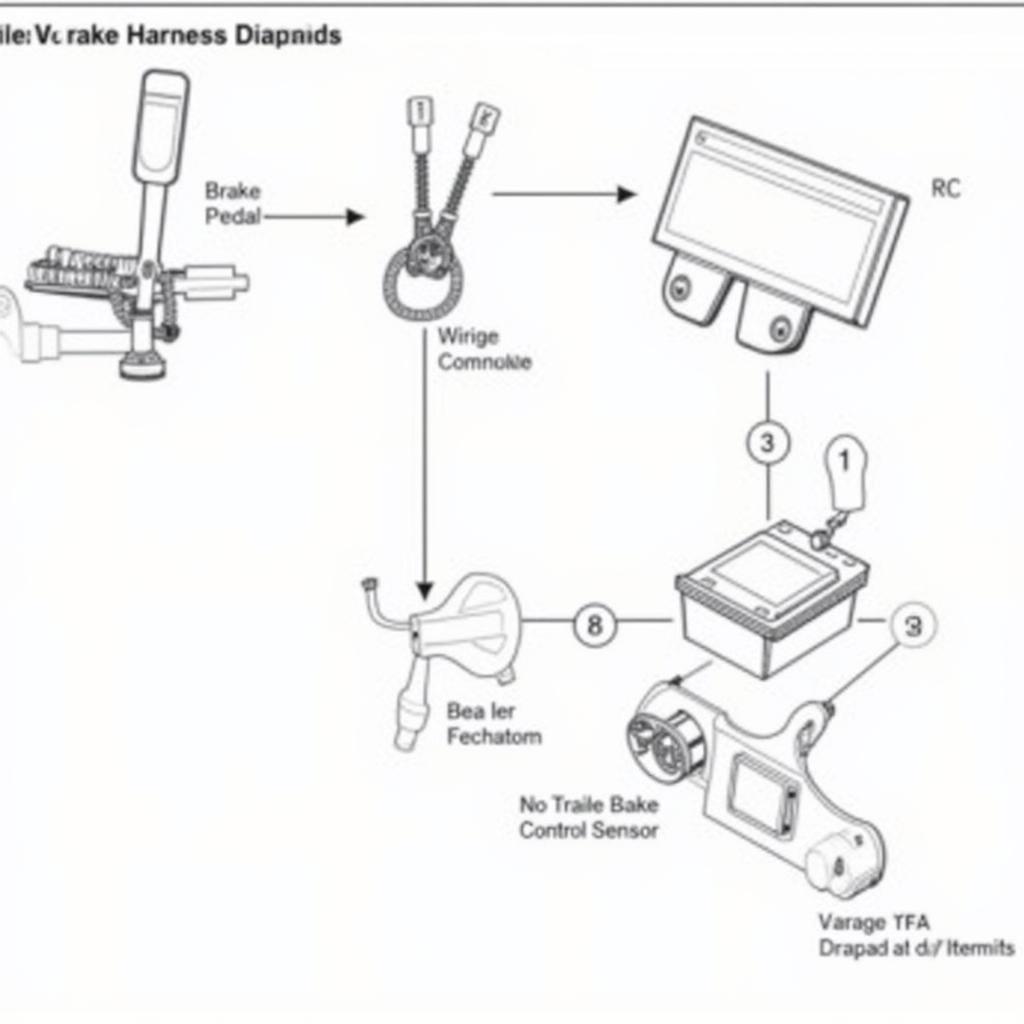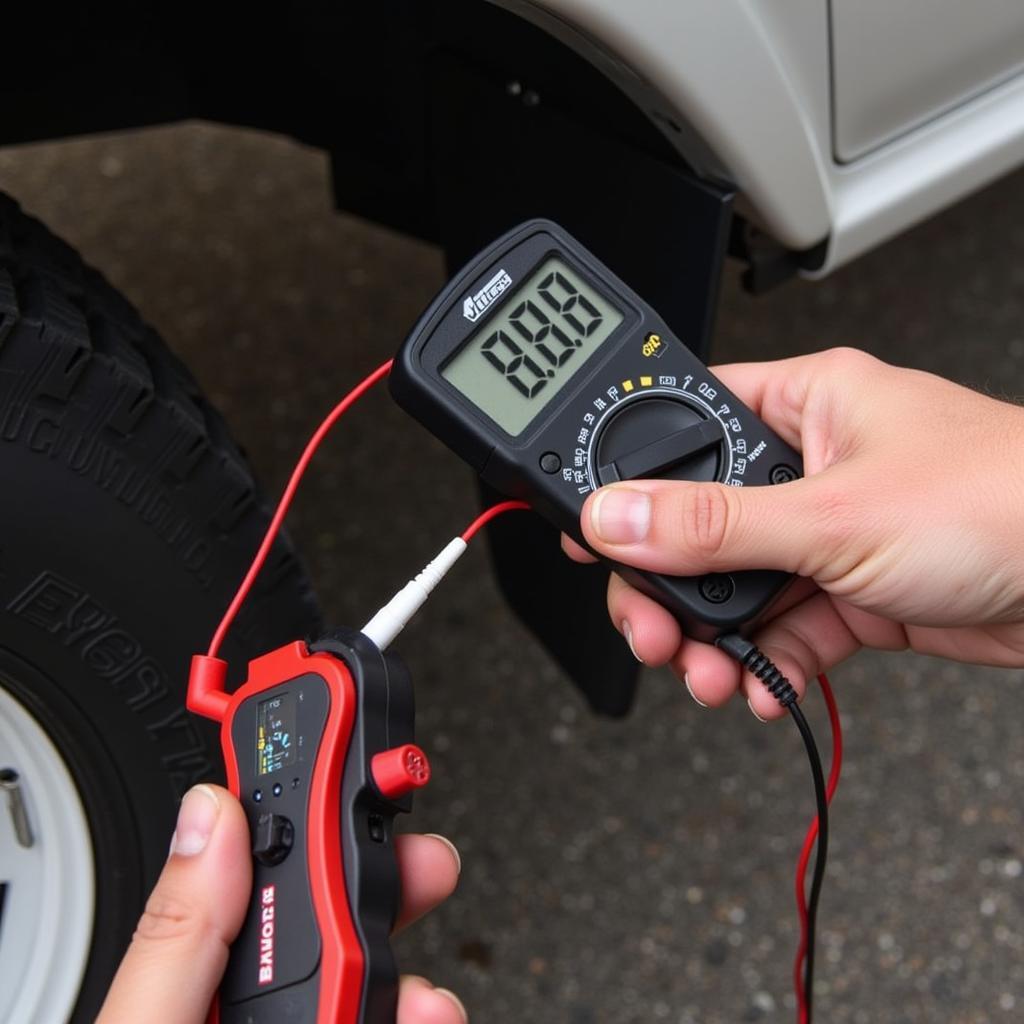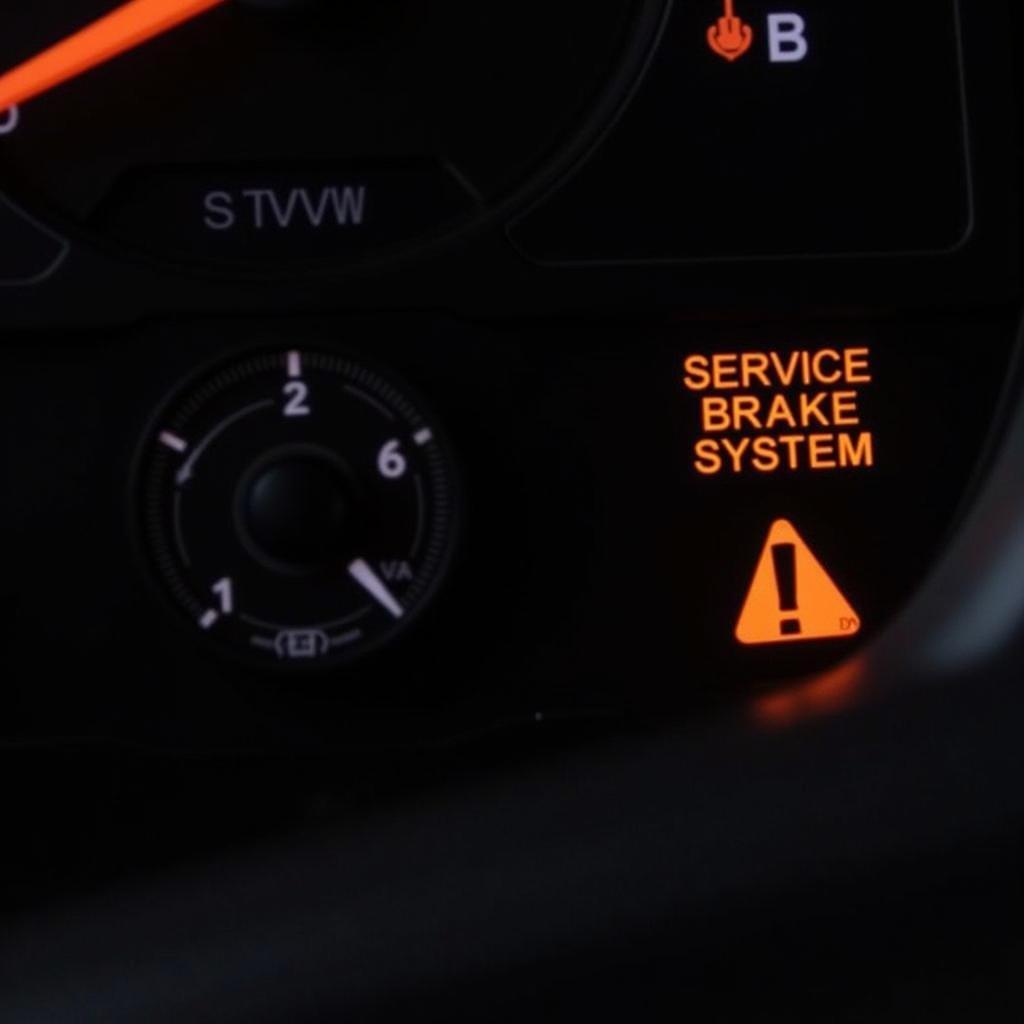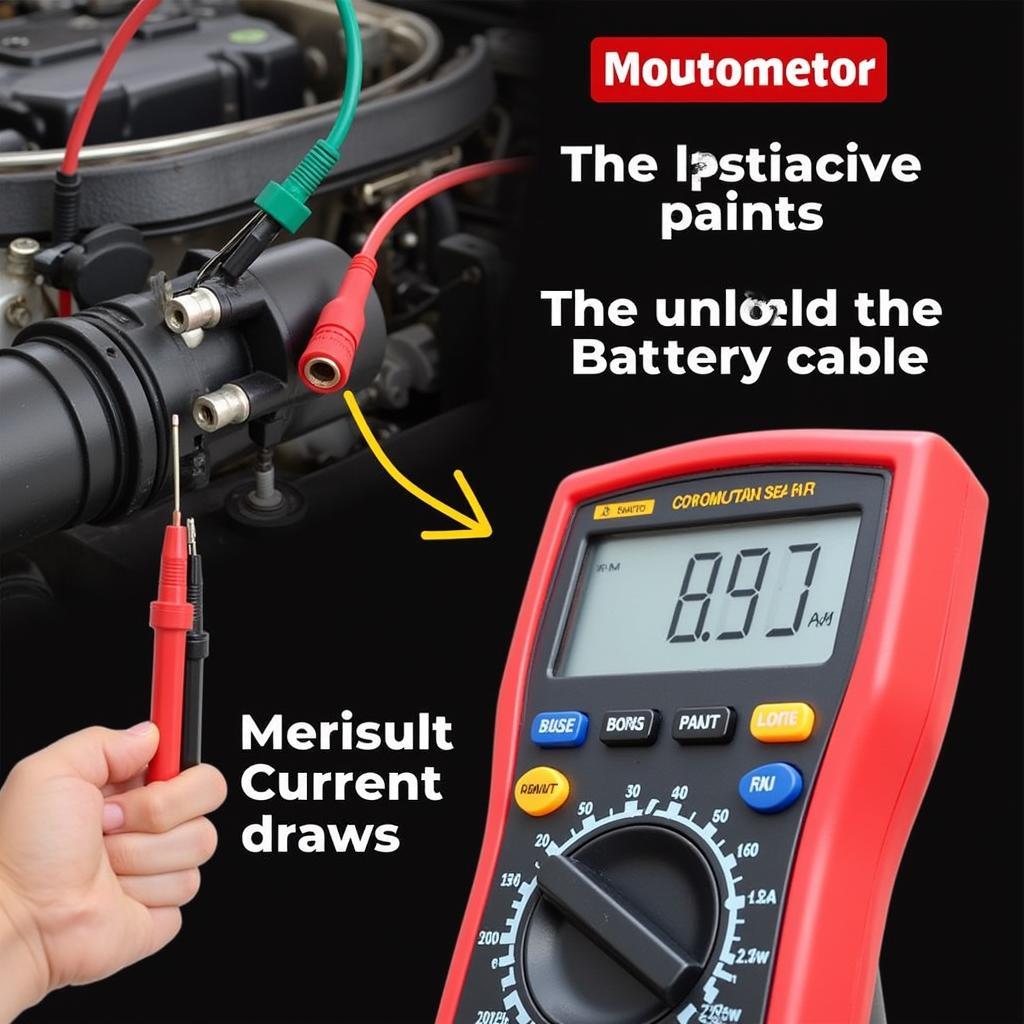The “Service Trailer Brake System” warning on your Chevy Silverado can be a cause for concern, especially when towing heavy loads. This comprehensive guide is designed to help you understand the trailer brake system, diagnose potential problems, and explore solutions for getting you back on the road safely.
Understanding the Chevy Silverado Trailer Brake System
The trailer brake system is a crucial safety feature that synchronizes your Silverado’s brakes with your trailer’s brakes, ensuring controlled and efficient stopping power. When you see the “Service Trailer Brake System” warning, it indicates a potential malfunction within this system, which could stem from various components:
- Trailer Brake Control Module (TBCM): The brain of the system, responsible for receiving signals from the brake pedal and relaying them to the trailer brakes.
- Brake Pedal Position Sensor: Monitors the position of your brake pedal and sends signals to the TBCM.
- Trailer Brake Wiring Harness: Provides the electrical connection between your Silverado and the trailer, enabling communication and power delivery for braking.
- Trailer Brake Magnets: Electromagnets within the trailer’s brake drums activate the trailer brakes when the TBCM sends a signal.
 Chevy Silverado Trailer Brake System Components Diagram
Chevy Silverado Trailer Brake System Components Diagram
Common Causes of the “Service Trailer Brake System” Warning
The “Service Trailer Brake System” warning can illuminate due to a variety of reasons:
- Faulty Trailer Brake Wiring: Damaged, corroded, or improperly connected wires in the trailer brake wiring harness are a common culprit.
- Malfunctioning Trailer Brake Control Module (TBCM): A faulty TBCM might not send accurate signals to the trailer brakes, triggering the warning.
- Defective Brake Pedal Position Sensor: A malfunctioning sensor can disrupt communication between the brake pedal and the TBCM, leading to the warning.
- Issues with Trailer Brake Magnets: Worn or damaged brake magnets within the trailer brakes can lead to uneven braking or complete brake failure, causing the warning light to illuminate.
- Blown Fuses: A blown fuse related to the trailer brake system can interrupt the electrical circuit, leading to system malfunction and the warning message.
Diagnosing the Problem
Troubleshooting the “Service Trailer Brake System” warning requires a systematic approach.
- Check Trailer Connection: Ensure the trailer is properly hitched and the wiring harness is securely connected. Inspect the 7-pin connector for any bent or corroded pins.
- Inspect Trailer Brake Wiring: Carefully examine the trailer brake wiring harness for any visible damage, cuts, or exposed wires. Pay close attention to areas where the harness bends or rubs against other components.
- Test Trailer Brake Controller Output: If you have an integrated trailer brake controller, use its manual override function to check if it sends power to the trailer brakes.
 Testing the Output of a Trailer Brake Controller
Testing the Output of a Trailer Brake Controller
- Scan for Diagnostic Trouble Codes (DTCs): A professional-grade OBD-II scanner can retrieve specific DTCs stored in your Silverado’s computer, providing valuable insights into the root cause of the problem.
Solutions and Repairs
Based on the diagnosis, you can pursue the following solutions:
- Repair or Replace Faulty Wiring: If you identify damaged or corroded wires in the trailer brake wiring harness, repair or replace them to restore proper electrical connections.
- Replace the TBCM: A faulty TBCM will likely require replacement. This procedure typically involves programming the new module to your Silverado’s specific settings.
- Change the Brake Pedal Position Sensor: If diagnosed as defective, the brake pedal position sensor will need replacement. This is a relatively straightforward procedure.
- Address Trailer Brake Magnet Issues: If you suspect problems with the trailer brake magnets, it’s crucial to have a qualified technician inspect and service your trailer’s brakes.
- Replace Blown Fuses: Locate and replace any blown fuses associated with the trailer brake system. Refer to your Silverado’s owner’s manual for the fuse box location and fuse diagram.
chevy silverado trailer brake warning
When to Seek Professional Help
While some trailer brake system issues are manageable with basic DIY skills, it’s always advisable to seek professional help in the following situations:
- Complex Electrical Problems: If you suspect issues with the TBCM, wiring harness, or other electrical components, it’s best to consult a qualified automotive electrician.
- Lack of Experience: If you’re uncomfortable working with electrical systems or lack the necessary tools, leave the diagnosis and repair to the experts.
silverado back seat warning look in back seat
Tips for Preventing Future Trailer Brake System Issues
- Regular Inspection: Regularly inspect your trailer brake wiring harness for damage, corrosion, and secure connections, especially before and after towing.
- Proper Maintenance: Ensure your trailer brakes are properly maintained, including regular inspections and adjustments of the brake shoes or pads.
- Avoid Overloading: Overloading your trailer can strain the braking system, leading to premature wear and potential failures. Always stay within your Silverado’s towing capacity.
2017 chevy silverado trailer brake system warning
Conclusion
Addressing the “Service Trailer Brake System” warning on your Chevy Silverado is crucial for ensuring safe and efficient towing. By understanding the system, potential issues, and diagnostic steps, you can take appropriate measures to rectify the problem and get back on the road with confidence. Remember, prioritizing regular maintenance and seeking professional help when needed can save you time, money, and potential safety hazards on the road.


